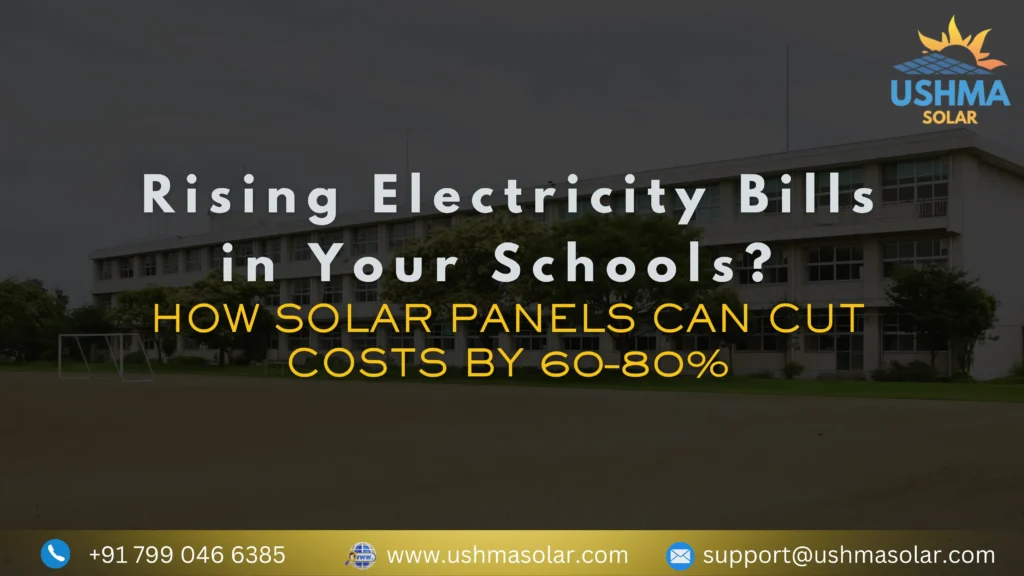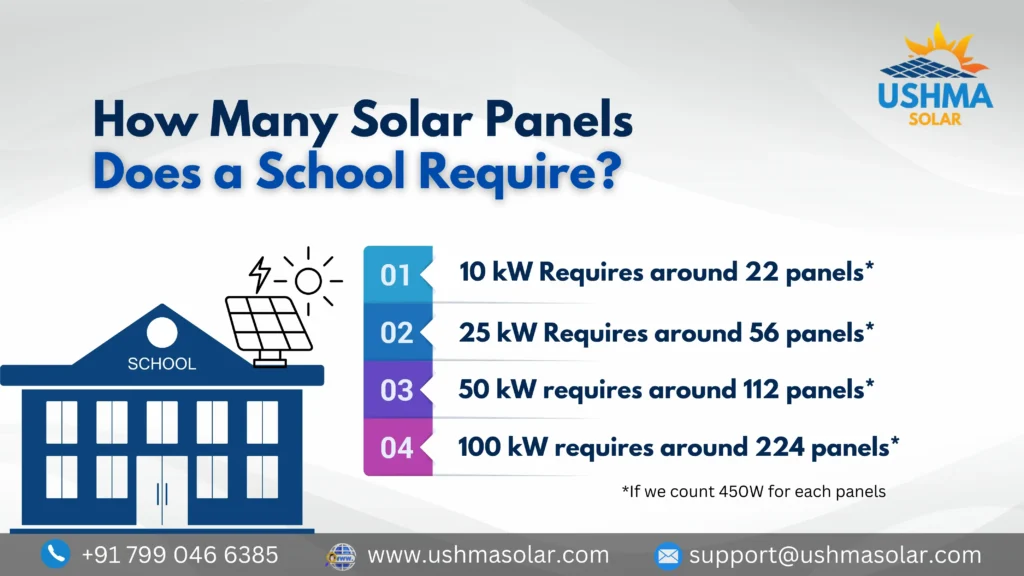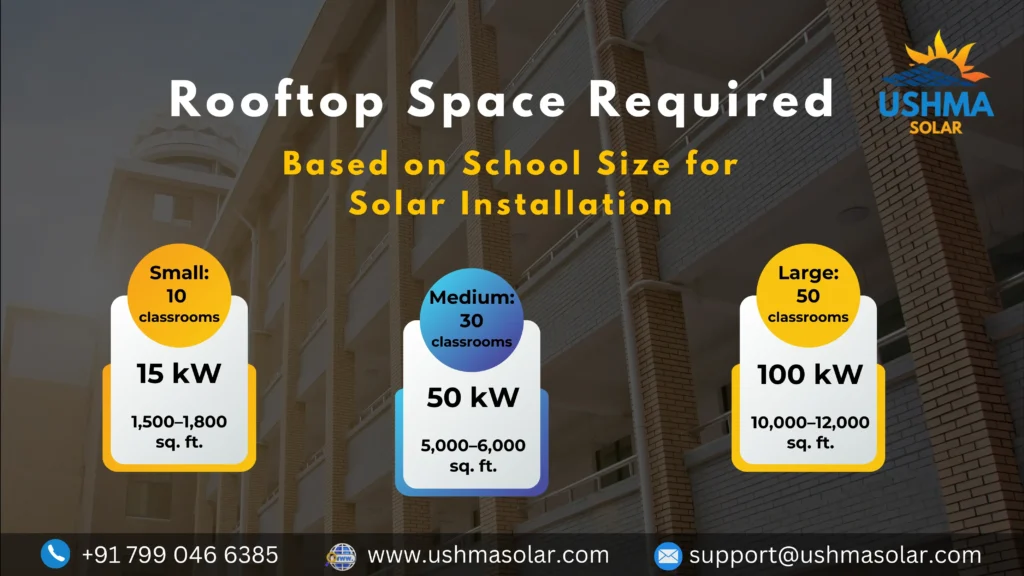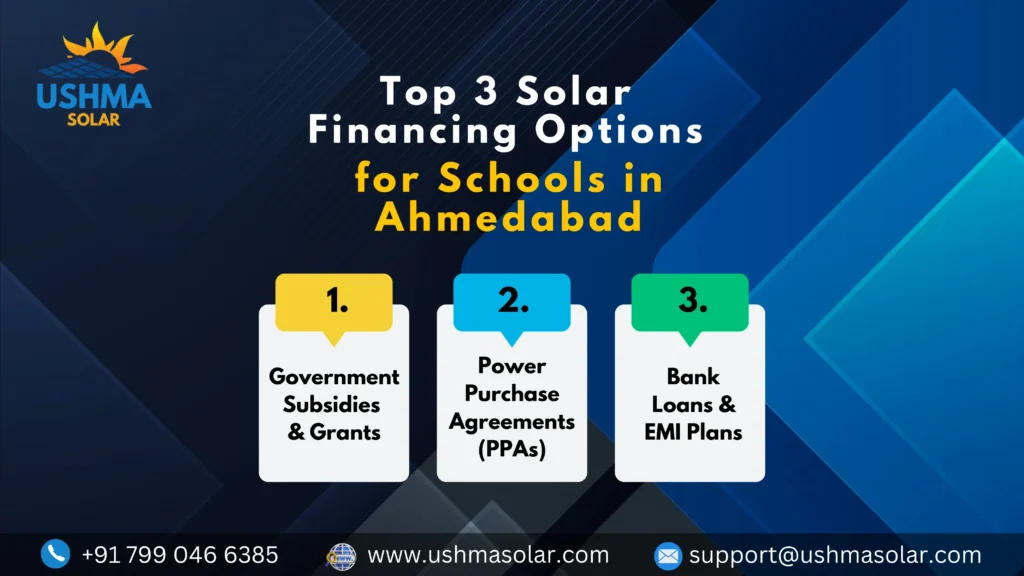
Ahmedabad schools are facing rising electricity bills, making it harder to manage budgets. But switching to solar for school in Ahmedabad can cut costs by 60–80%, freeing up funds for education. This guide explains why bills are increasing and how schools can save with solar.
The Problem: Why Are Electricity Bills Skyrocketing for Schools in Ahmedabad?
1. Annual Tariff Hikes in Gujarat
The Gujarat Electricity Regulatory Commission (GERC) has been increasing commercial electricity rates by 8–10% annually over the past five years. This has led to a significant rise in electricity costs for schools in Ahmedabad:
A medium-sized school in Ahmedabad with 30 classrooms and a monthly consumption of 8,000 units now pays ₹74,000/month (vs. ₹56,000 in 2021). At this rate, bills could exceed ₹1 lakh/month by 2026.
2. Increased Energy Demand
- Technology in Classrooms: Smart boards, digital classrooms, and computer labs add 20–30% to energy bills.
- Rising Temperatures: ACs and coolers increase summer electricity bills by 40–50%.
The Solution: How Solar Energy Reduces Electricity Costs for Ahmedabad Schools
How Solar Works for Schools
- Generate Free Power: Solar panels produce electricity at ₹2.5–₹3.5/unit, compared to ₹9.25/unit from the grid.
- Reduce Grid Dependence: Use solar power during the day and grid power at night.
- Net Metering: Export excess solar energy to the grid and earn credits to offset nighttime usage.
How to Read Your Commercial Electricity Bill
Schools receive commercial electricity bills from PGVCL, UGVCL, DGVCL, or MGVCL. Here’s what to check:
- Units Consumed: Total kWh used in the billing period.
- Fixed Charges: A monthly fee based on sanctioned load (kW).
- Energy Charges: Cost per unit (kWh) based on the tariff.
- Demand Charges: Extra cost if the school exceeds sanctioned load.
- Fuel Adjustment Charge (FAC): Adjustments due to fuel price changes.
- Government Subsidies: Any reductions or incentives applied.
Schools should analyze past bills to identify peak usage hours (10 AM–4 PM) when solar power can replace grid electricity.
Understanding your electricity bill is crucial for calculating potential solar savings. If you’re unsure how to calculate electricity units in Gujarat, check out this Quora discussion on electricity bill calculations in Gujarat for a detailed explanation.
How to Calculate How Many kW of Solar Your Ahmedabad School Needs
To estimate the required solar capacity:
- Find Your Monthly Consumption: Check your electricity bill for units consumed (kWh/month).
- Calculate Daily Consumption: Divide monthly kWh by 30.
- Estimate Solar Requirement:
- 1 kW solar generates 4–5 kWh/day in Gujarat.
- Divide daily consumption by 4.5 to get system size (kW).
Example Calculation:
- A school consuming 9,000 kWh/month uses 300 kWh/day.
- Required solar capacity = 300 ÷ 4.5 = 67 kW (round to 70 kW).
How Many Solar Panels Does a School in Ahmedabad Require?

| Solar System Size | Number of Panels (450W each) |
|---|---|
| 10 kW | 22 panels |
| 25 kW | 56 panels |
| 50 kW | 112 panels |
| 100 kW | 224 panels |
How Much Rooftop Space Do Ahmedabad Schools Need for Solar Panels?
Solar panels need shadow-free, unobstructed space to function efficiently. Here’s a general guideline:
1. Rooftop Space Per kW of Solar Panels
- Standard Requirement: 100–120 sq. ft. per kW
- Example: A 50 kW system needs 5,000–6,000 sq. ft.
2. Rooftop Space Required Based on School Size

| School Size | Recommended Solar System | Rooftop Space Needed | Equivalent Area (Approx.) |
| Small (10 classrooms) | 15 kW | 1,500–1,800 sq. ft. | Approx. 2 classrooms |
| Medium (30 classrooms) | 50 kW | 5,000–6,000 sq. ft. | Approx. 6 classrooms |
| Large (50+ classrooms) | 100 kW | 10,000–12,000 sq. ft. | Approx. 12 classrooms |
3. Alternative Solutions for Limited Rooftop Space
- Solar Carports: Panels installed over parking areas provide shade and generate power.
- Canal-Top Solar: Utilize Gujarat’s 500 km canal network for solar installations.
- Shared Solar Parks: Schools can collaborate on off-site solar projects.
Cost Savings: Solar vs. Grid Power for Ahmedabad Schools
| School Size | Monthly Grid Bill (2024) | Solar System Size | Monthly Savings |
| Small (10 classrooms) | ₹45,000 | 15 kW | ₹34,000 (75%) |
| Medium (30 classrooms) | ₹1 lakh | 50 kW | ₹70,000 (70%) |
| Large (50+ classrooms) | ₹2.2 lakh | 100 kW | ₹1.6 lakh (72%) |
Top 3 Financing Options for Solar for School in Ahmedabad

- Government Subsidies & Grants – Schools can apply for Gujarat’s solar subsidies that cover a portion of installation costs.
- Power Purchase Agreements (PPAs) – Third-party investors install solar systems at no upfront cost, and schools pay for power at lower rates.
- Bank Loans & EMI Plans – Several banks offer low-interest loans for solar projects with easy repayment options.
If you’re considering a solar installation for your school, it’s essential to understand how commercial solar systems work. Check out our Comprehensive Guide on Commercial Solar Panel Systems to learn about benefits, costs, and key considerations for large-scale solar projects.
Frequently Asked Questions (FAQs)
What is the lifespan of solar panels?
Most solar panels last 25–30 years with proper maintenance.
How long does it take to install solar panels in a school?
Installation is typically completed in 30–60 days, depending on system size.
Can schools get government subsidies for solar installation?
Yes, Gujarat offers solar subsidies to help schools reduce upfront costs.
Do solar panels require a lot of maintenance?
No, they require minimal maintenance, such as occasional cleaning.
Will solar panels work during power outages?
Standard grid-tied systems do not work during outages, but hybrid solar systems with batteries can provide backup power.
Can schools use solar power at night?
Yes, net metering allows schools to earn credits for excess energy and use grid power at night.
How much can schools save on electricity bills with solar?
Schools can save 60–80% on electricity costs.
Conclusion: Smarter Spending with Solar Energy in Ahmedabad
Ahmedabad schools are facing rising electricity costs, but solar power offers a solution to cut costs by 60–80%. With Gujarat’s subsidies and abundant sunshine, schools can break even in 4–5 years and enjoy free power for decades. Investing in solar means more funds for books, labs, and scholarships, making it a smart and sustainable choice.
